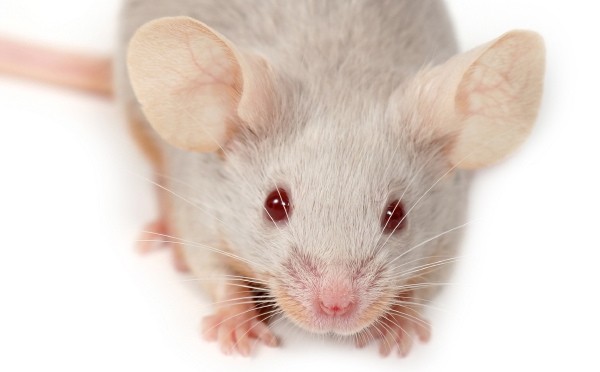House Mouse (Mus musculus)
Natural history
The most common pet mouse is the standard white laboratory mouse, although pet mice are not as inbred as some strains of lab mice.
Taxonomy
Class: Mammalia
Order: Rodentia
Suborder: Myomorpha
Family: Cricetidae-gerbils, lemmings, muskrats, New World rats and mice, voles
Breeds
The standard white lab mouse is most commonly seen, but different
colors and varieties are entering the pet trade such as satin or spotted.
Diet
The bulk of the diet should consist of a rodent block or pellet that contains a minimum crude protein content of 16% and 4-5% fat. Seed-based diets promote obesity and should be avoided.
Husbandry
Mice are nocturnal and crepuscular. Females or mixed pairs do well together, but male mice tend to fight.
Provide the largest cage possible made of stainless steel, durable plastic, or wire. Provide ample nesting material and deep bedding such as aspen shavings or recycled paper product. Provide enrichment in the form of tunnels, exercise wheels, nest boxes, and items to chew on old paper towel rolls or toilet paper tubes.
Normal physiologic values
| Temperature | 98.8°F | 37.1°C | |
| Pulse | 400-700 bpm | ||
| Respiration | 90-200 bpm | ||
| Body weight | Adult male | 20-40 g | The average mouse weighs about 30 grams. |
| Adult female | 18-35 g | Male mice are often twice the size of females. | |
| Mean life span | 1-3 years | ||
| Sexual maturity | 50-60 days | varies among strains | |
| Gestation | 19-21 days | ||
| Birth weight | 1.0-1.5 g | ||
| Litter size | 10-12 | ||
| Weaning age | 18-21 days | ||
| Target environmental temperature: | 50-68°F | or 10-20°C | |
| Target environmental humidity: | 45-55% | ||
| Water intake: | 5-8 ml/day |
Anatomy / physiology
Dental formula: Incisor 1/1 Canine 0/0 Premolar 0/0 Molar 3/3
The incisors are open-rooted and continuously growing.
The stomach consists of a non-glandular forestomach and a glandular stomach.
Restraint
Although mice rarely bite normally, they may bite when handled.
Mice are also quick to jump. Manually restrain mice by scruffing the neck.
The lateral tail vein may be used to collect small volumes of blood.
Preventive medicine
Important medical conditions
- Mammary adenocarcinoma
- Mange
- Mycoplasmosis
- Obesity
- Sendai virus
**Login to view references**
References
References
Banks RE, Sharp JM, Doss SD, Vanderford DA. Exotic Small Mammal Care and Husbandry. Durham, NC: Wiley-Blackwell; 2010.
Dyer SM, Cervasio EL. An overview of restraint and blood collection techniques in exotic pet practice. Vet Clin Exot Anim 11:423-443, 2008.
Mitchell MA, Tully TN. Manual of Exotic Pet Practice. St. Louis, MO: Saunders Elsevier; 2009.
Quesenberry KE, Carpenter JW (eds). Ferrets, Rabbits, and Rodents: Clinical Medicine and Surgery, 2nd ed. Philadelphia, WB Saunders, 2004.
Pollock C. Basic information sheet: Mice. February 14, 2010. LafeberVet Web site. https://lafeber.com/vet/basic-information-for-mice/
